Knoxville is full of outdoor opportunities, from hiking House Mountain to mountain biking in Knoxville’s Urban Wilderness. But sometimes you might want to dial it down a notch or two on the adventure scale. You might have young kids in tow, accessibility issues, or just want to take it easy. Today we’re going for the peaceful side of nature and featuring gardens to visit!
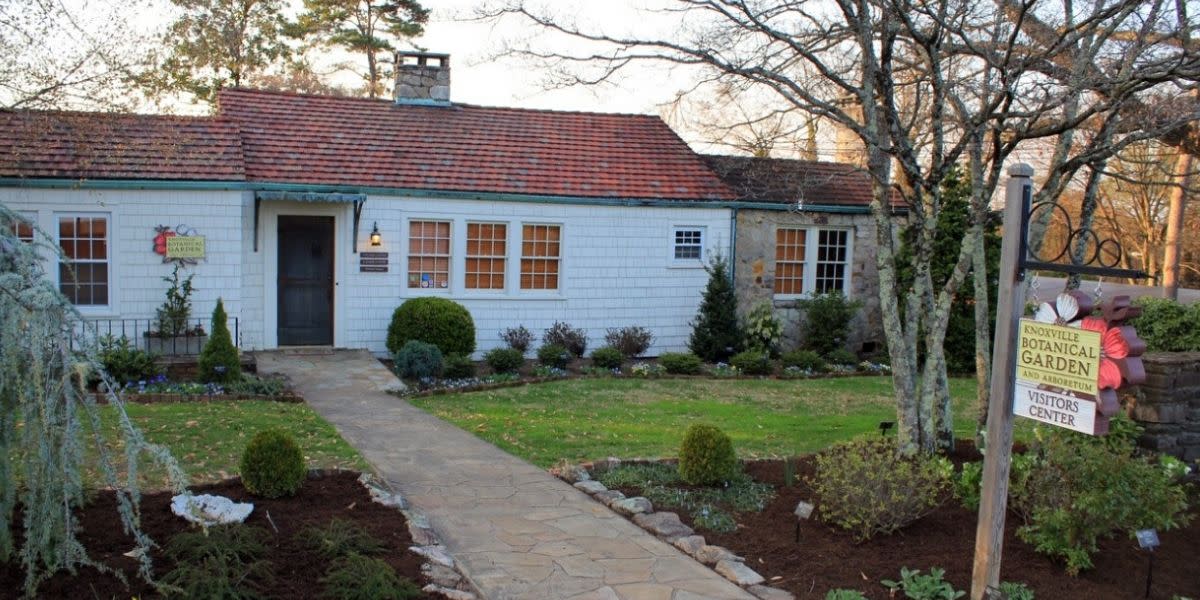
Knoxville Botanical Garden and Arboretum
The Knoxville Botanical Garden and Arboretum (KBGA) is an expansive 47 acre space open to the public in East Knoxville. Like other Knoxville attractions such as James White’s Fort, this land was given as a grant for service during the Revolutionary War. An orchard was planted on this tract by David Wessel of Buncombe County, North Carolina, and he began selling fruits and vegetables from his family farm. While many post-Revolutionary War pioneers settled in East Tennessee, many also continued west. Wessel provided passing settlers with seeds and small plants needed to start their own farms.
Several generations continued in Wessel’s path, although the focus shifted over time from food crops to ornamental plants. In the 1940s, one of his descendents attended the University of Tennessee studying landscape design and particularly enjoyed stonework. Gatehouses and walls were constructed, which is what visitors of today often notice first. Several decades later, the last owner partnered with help from the ASLAN Foundation to set up the Knoxville Botanical Garden and Arboretum.
You might think of going to a garden as “boring” or “something retired people do”. But we’re here to tell you the opposite! Gardens are for EVERY body. There’s nothing like seeing the wonder on your preschooler’s face as a butterfly floats past their nose. Or the satisfaction of learning how to fix your own lawn mower or having made your own beeswax candle at a class. They even have a date night to create herbaceous cocktails with local distiller PostModern Spirits! This summer they will host Grooves in the Garden Festival, enjoy the music and bring a lawn chair and blanket!
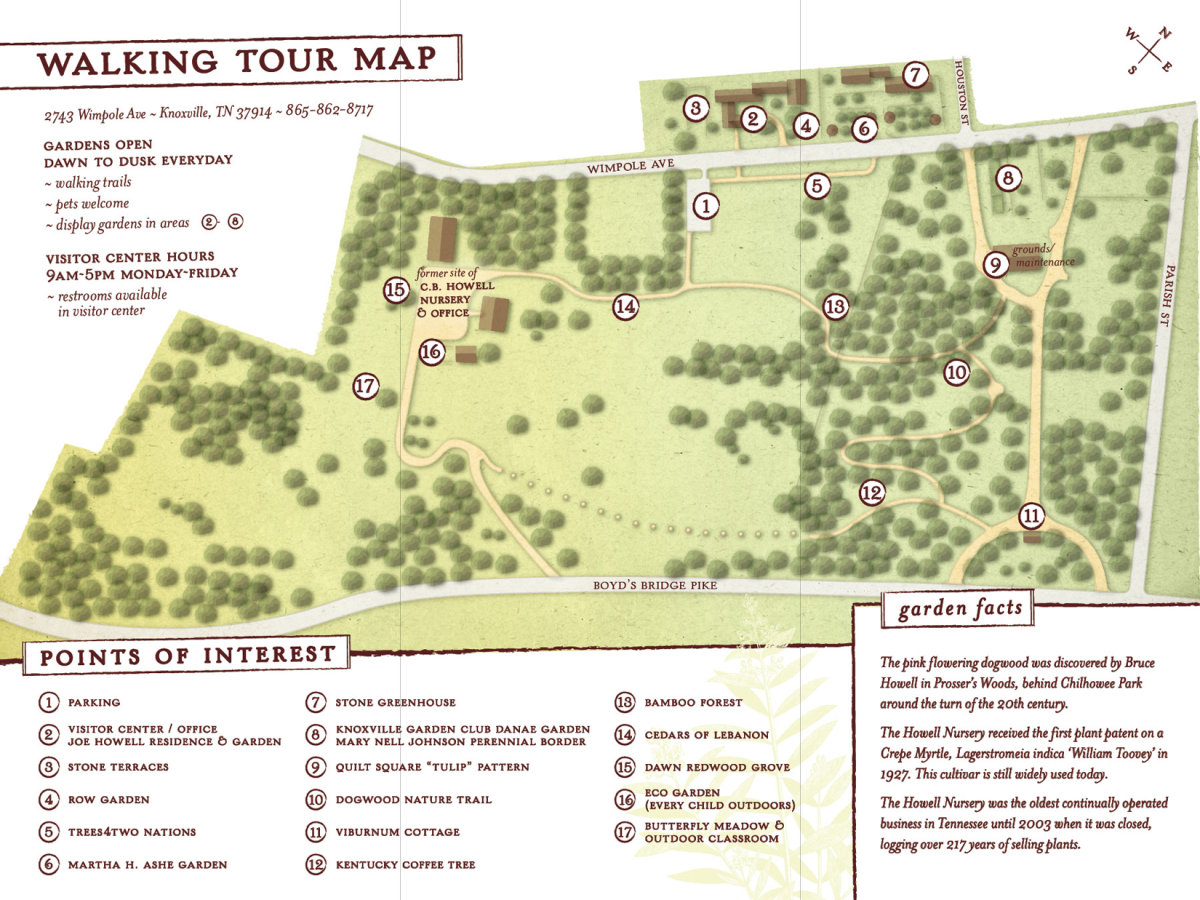
Walking Map | credit Knoxville Botanical Gardens
Some quick FAQs
When to visit? Year-round, open dawn to dusk 365 days a year!
How much is admission? Donations are accepted, but these gardens are FREE to visit!
What is there to see? There are several components to the KBGA, so you might have to plan more than one visit! You’ll see the stone terraces as referenced above, the beds planted and maintained by the Knox County Master Gardeners, the Dogwood Nature Trail which features over 20 cultivars of this region’s native Cornus florida, the Butterfly Meadow – a perfect for kids garden showcasing only plants native to East Tennessee, and much more.
How can I be a good visitor? We’re glad you asked! Please watch where you step (don’t walk in the plant beds, there might be little seedlings trying to grow in there!), don’t litter, and please park in designated areas. Cameras are welcome (follow and tag @knoxgarden on social), but professionals are requested to join as a member.
To learn more about the KBGA including classes, programs, and events, visit them here.
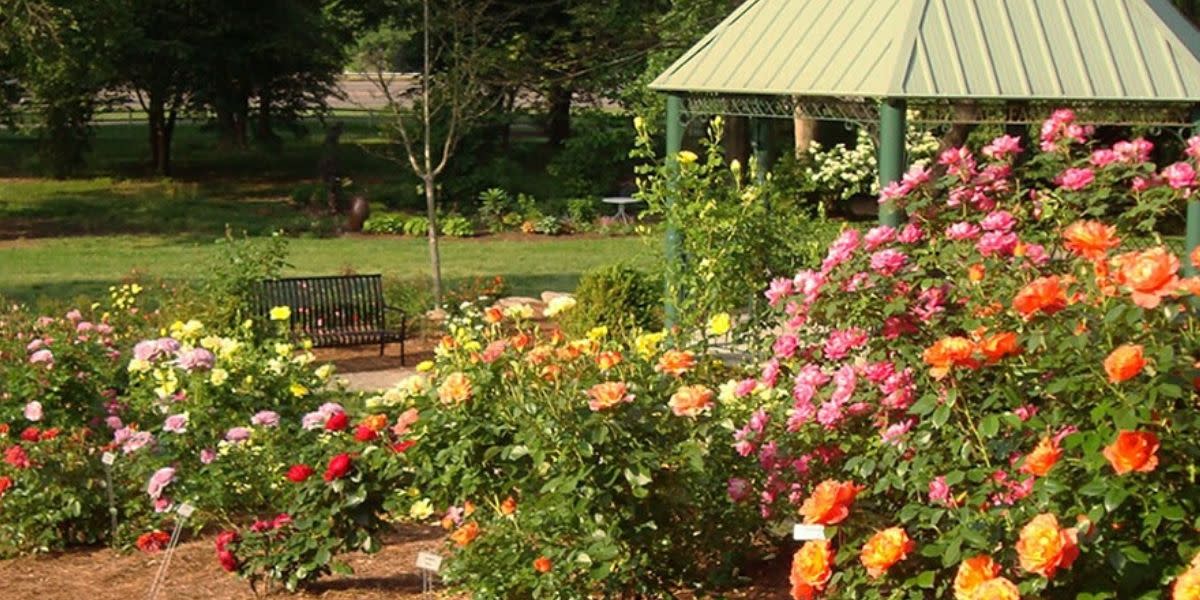
University of Tennessee Gardens
The UT Gardens are the official botanical gardens of the state of Tennessee. In addition to Knoxville, there are two other locations in Jackson and Crossville. They have an interesting history, established by the University of Tennessee’s Department of Plant Sciences in 1983 and now recognized as one of 34 official All American Selections test sites in the US. This garden acts as an outdoor laboratory to see how plants will fare in this mid-southern climate (read: hot and humid summers, alternating freezing and thawing winters). May the best plant win; these tests can show which varieties reach the commercial market. The gardens here also showcase how best to landscape and design for home garden purpose.
They also host classes and special events. Some annual favorites include the Art in the Garden (every year has a different theme, designed to promote community participation and artist collaboration with the gardens), the Wild Bird Eggstravaganza, and the Howl-O-Ween Pooch Parade and Pet Expo. No matter what time of year you visit, there’s always something to do at UT Gardens!
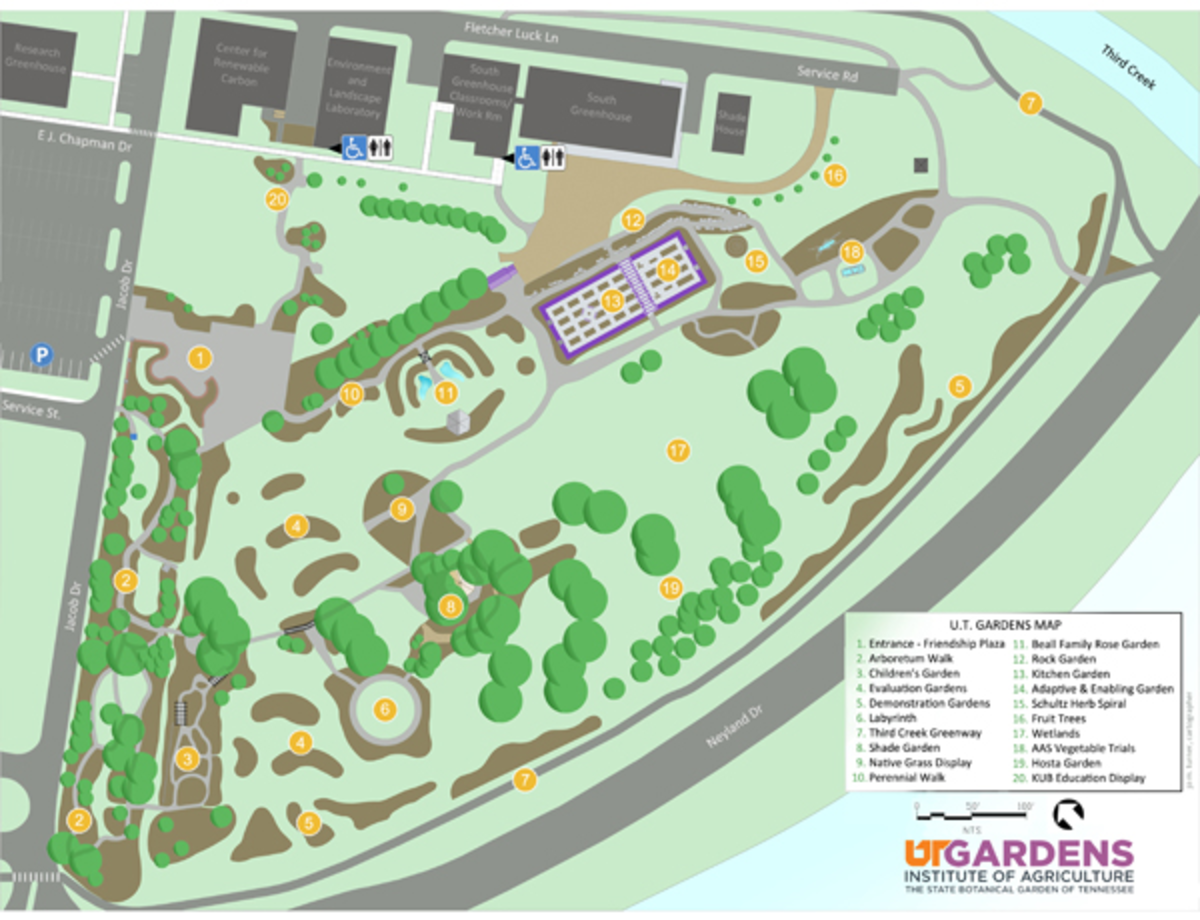
Walking Map | credit UT Gardens
When to visit? Year-round, open dawn to dusk 365 days a year!
How much is admission? Certain events charge an entrance fee, but otherwise these gardens are FREE to visit!
What is there to see? It’s hard to pick a favorite, but possibly the rose garden steals the show. Be sure to take some pictures of the heart sculpture (there is a stonework that has a heart shaped cut out that visitors love to get a photo inside of the heart). They have a great children’s area and other random finds like an old busted pick up truck that is excellent practice for newbie photographers trying to learn the manual settings on their cameras. The Third Creek Greenway connects through with a view of the Tennessee River.
How can I be a good visitor? Very similar to KBGA: don’t litter, and please park in designated areas (parking is limited to 10 spaces during the week). Oh, and don’t forget to clean up after your pets and keep ‘em on a leash! No biking or skating please. Cameras are welcome (follow and tag @utgardens on social), but professionals are requested to join as a member.
To learn more about the UT Gardens, including classes, programs, and events, visit them here.
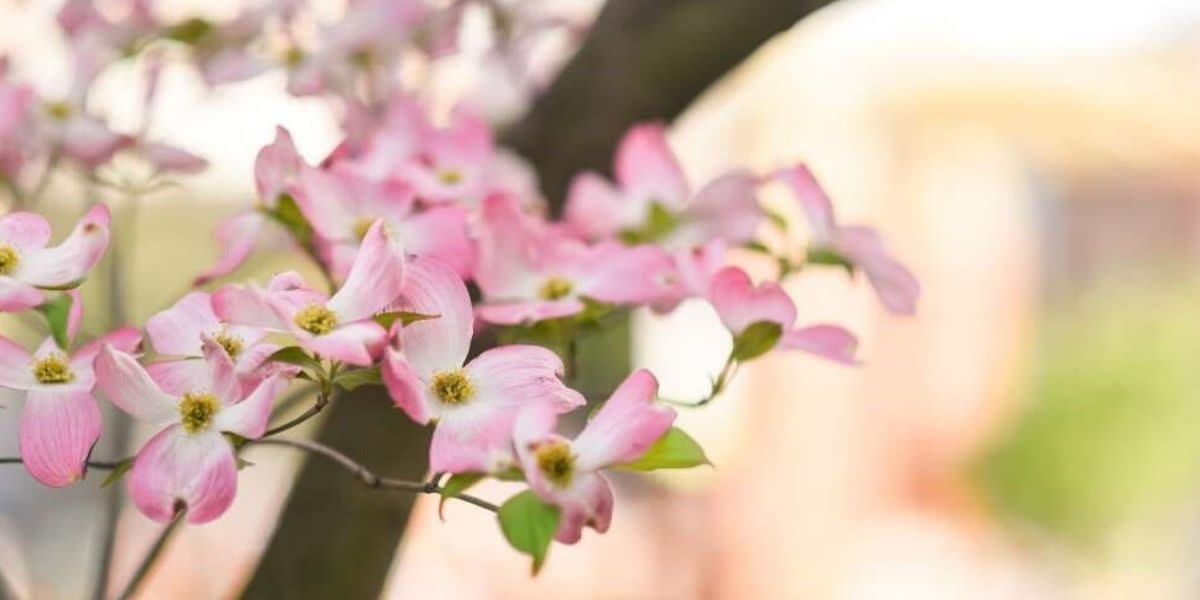
Dogwood Arts itself is not a garden, but works to promote arts, culture, and natural beauty of our region. In addition to their House & Garden Show, they have several other annual initiatives including Chalk Walk, the Dogwood Arts Festival, Featured Gardens, and its founding project – the Dogwood Trails.
Dogwood Arts was founded on the idea of the Dogwood Trails, in response to a New York newspaper reporter who visited in 1947 and wrote “Knoxville is the ugliest city I ever saw in America, with the possible exception of some mill towns in New England.” This spurred the creation in 1955 of an organization with members of the Knoxville Garden Club and others to beautify our city. The Dogwood Trails can be found in every area of the city, and can be easily recognized by the pink dashes down the center of the road. Leisurely drive, bike, or walk and get to know these neighborhoods’ beauty.
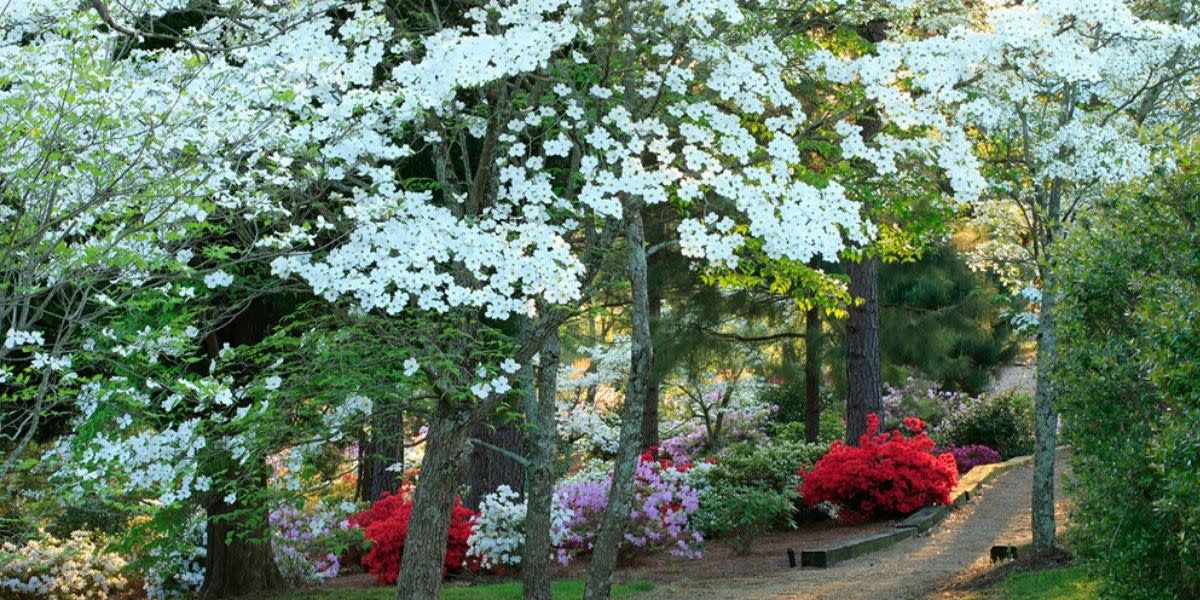
In 2020, Dogwood Arts celebrates 65 years and features The Sequoyah Hills Trail. Sequoyah Hills is one of the oldest premier neighborhoods in the city. Cherokee Boulevard is an absolute delight, bursting with dogwoods, azaleas, and other carefully crafted specimens.
For their Featured Gardens, Dogwood Arts work with local residents who own private gardens that are otherwise unavailable to the public and offer specific dates where they can be toured, often by the homeowners themselves. Savage Garden is a well-known favorite that is often featured in late winter as during this time the structure of the landscape is revealed, showcasing thousands of snowdrops, daffodils, wood hyacinths, and other flowering bulbs.
To learn more about Dogwood Arts and their programming, visit them here.

